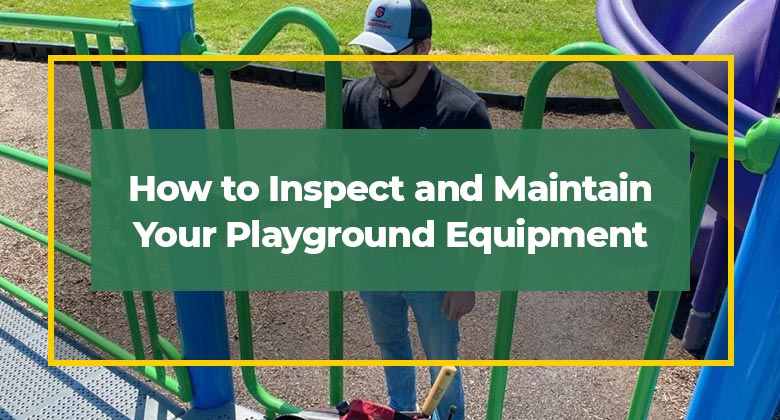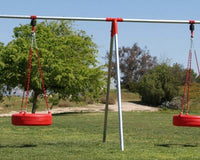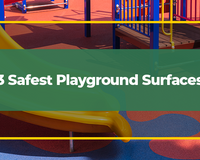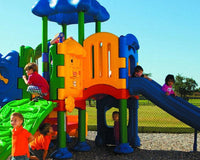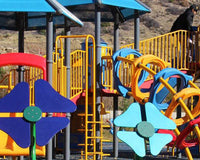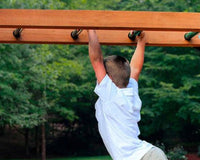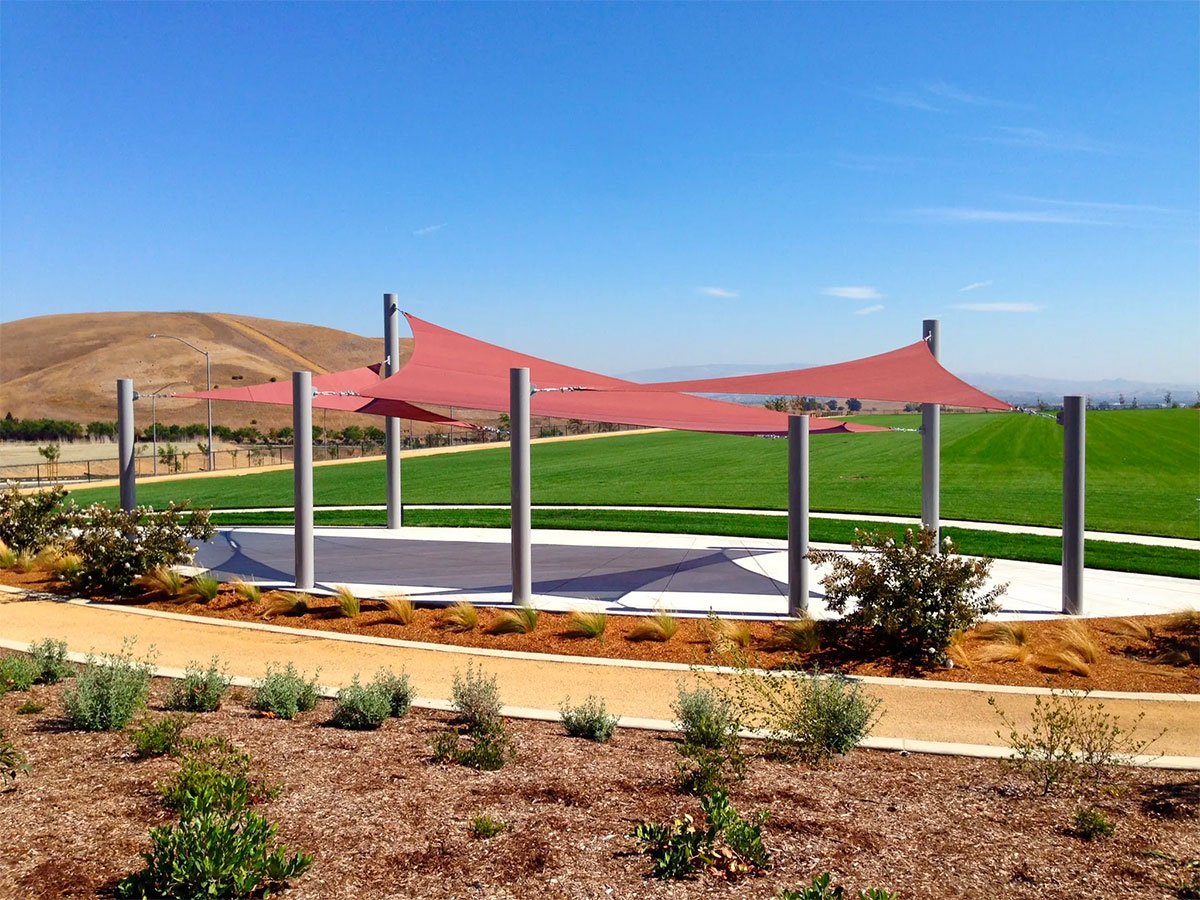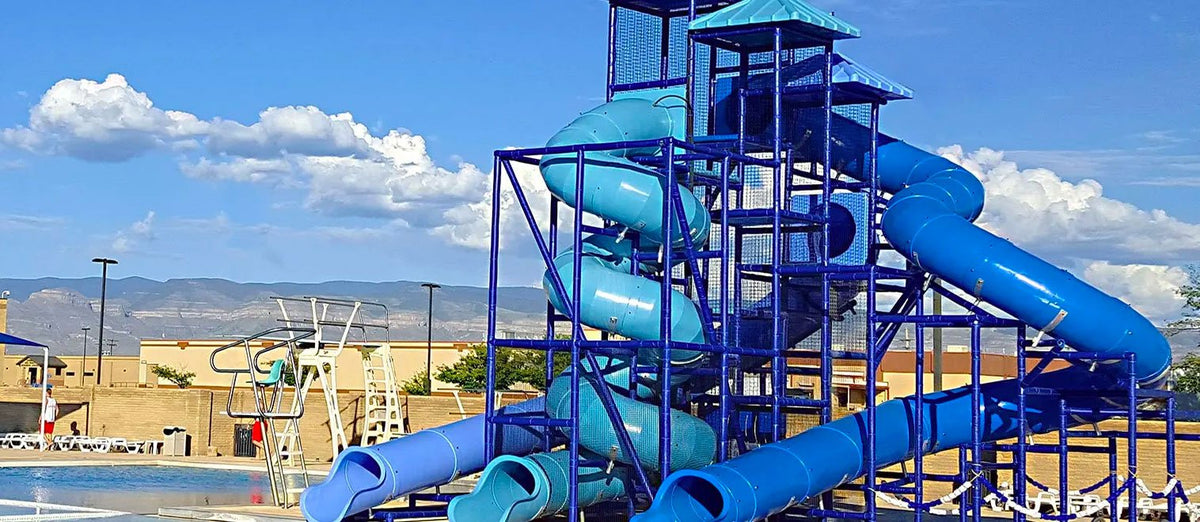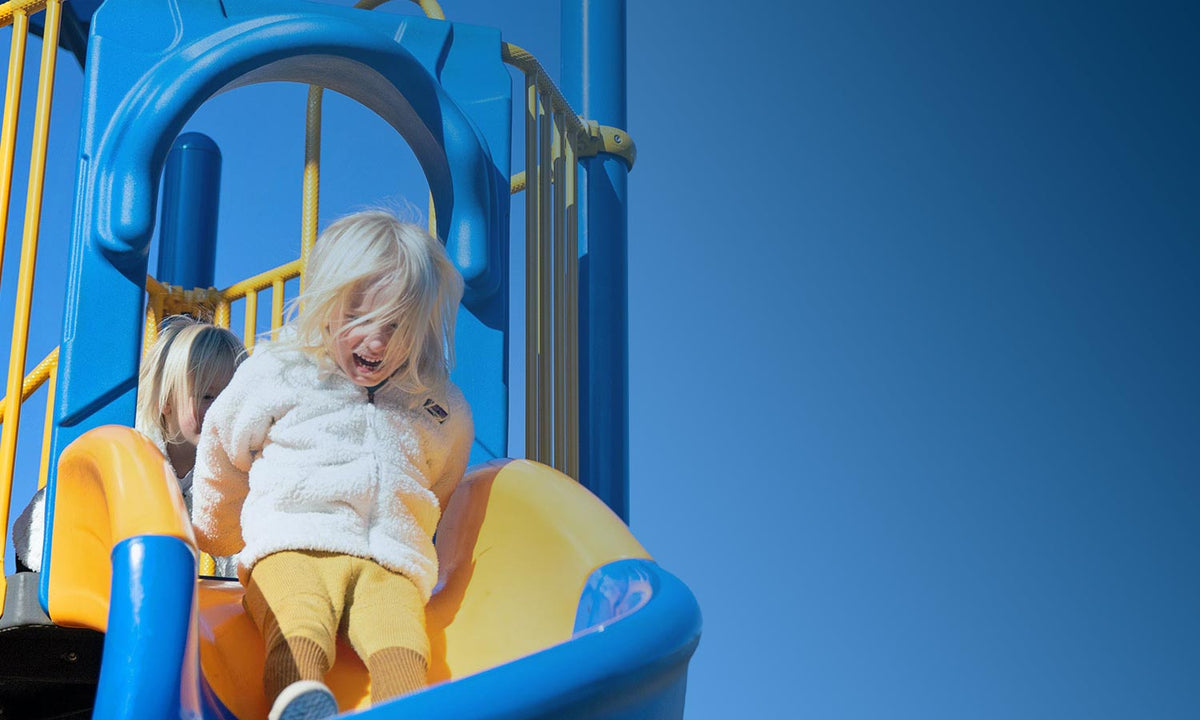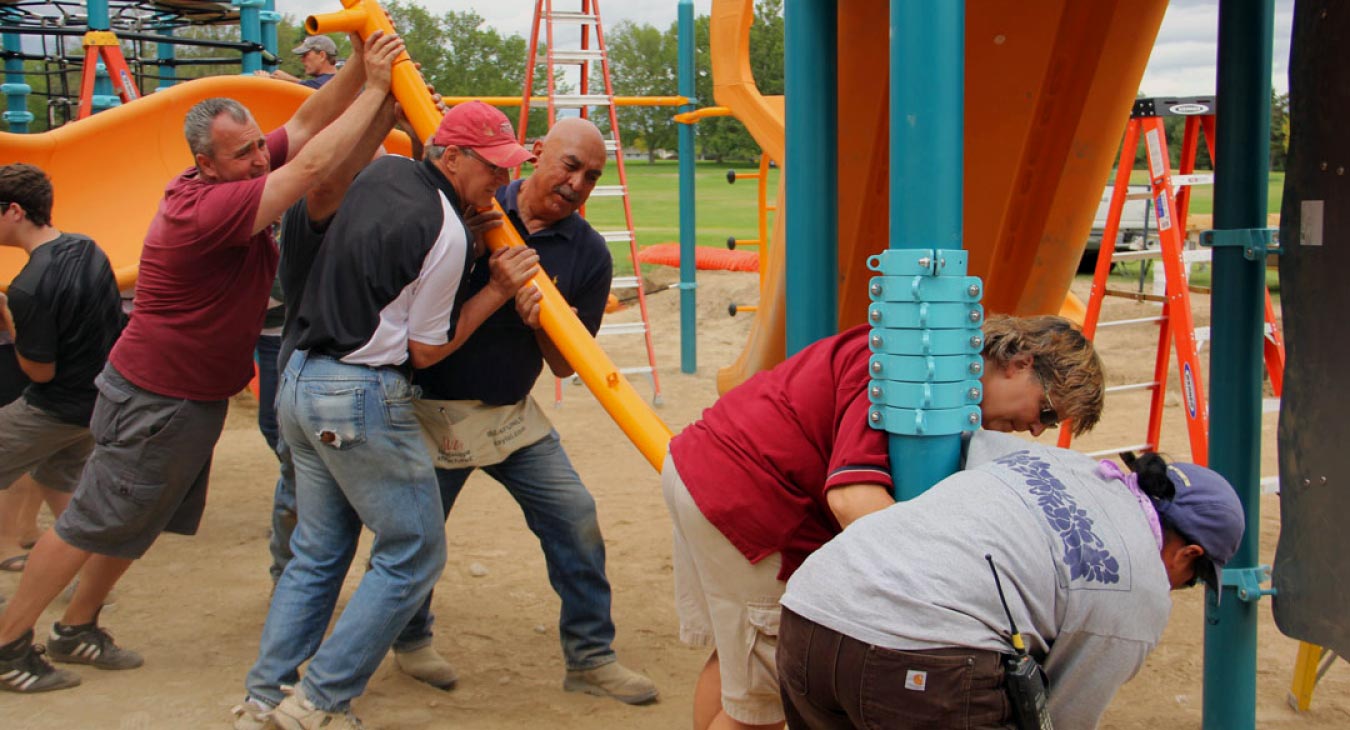How to Inspect and Maintain Your Playground Equipment
Playgrounds are a place of joy, laughter, and energy. They are also a place where children learn social skills, make friends and have fun. However, there is much more to them than meets the eye when it comes to playground maintenance!
Playgrounds can have hidden dangers that could put children in danger or make their experience less enjoyable. Take care to inspect your play area regularly for these hazards so that you know if anything needs repairing before it causes real damage.
Why Proper Playground Maintenance Is Important
The dangers of a playground don't end when the children go home. Rotting wood, rusted screws, and peeling paint can all be a threat to the safety of adults. Not only could these aspects cause an accident for those around your playground, but they also make your play areas look less appealing.
By correctly maintaining your playground equipment, you will ensure its safety and appearance. In addition, when you correctly maintain and inspect your playground, it will last much longer.
That is because by fixing minor issues before they become big problems, you are saving yourself the hassle of replacing equipment. Playground maintenance is particularly important in public areas where your funding may be limited. If you can keep your play items in working condition, you will not have to replace them every few years, which is far better for both budgeting purposes.
Call us Today to Talk to a Pro
Crucial Inspection Points on Playgrounds
Playgrounds typically have these three aspects in common, so ensure that you always inspect these factors as part of your playground maintenance.
Ropes
A rope is excellent for children to enjoy climbing on when it comes to playground equipment! However, if ropes are not adequately maintained or replaced promptly, they can cause significant injuries for climbers. Inspect your ropes frequently by looking out for frayed ends that could be dangerous for people around them.
Also, check the rope's integrity by tugging at it with some force - if you see any signs of wear or tear, do not hesitate to try replacing it as soon as possible. There's no harm in having an extra rope lying around because accidents tend to happen unexpectedly, and you don't want to have a child in danger because you didn't plan for them.
Handrails and Rails
Handrails and rails are another playground item that needs your attention every so often. Ensure there is no excessive rust or weather damage on these pieces of equipment. They can be particularly dangerous with rot since the corrosion makes them thin and weak in spots.
Weather damage can also be a problem because you have to deal with slippery surfaces, which are dangerous for both children and the elderly.
The Playing Surface
Last but not least, check your playground's surface. Ensure it is free of any cracks or gravel that could cause hazards to those moving around close to the playground. Because children are more likely to fall off of playground equipment, they must have a safe place to play.
Cracks and rocks also pose problems for adults who need support to balance while climbing or playing on equipment. You might have to replace the surface if it is or becomes too worn down.
Lean more about Playground Surfaces Here.
Maintenance and Inspection Tips
You can take some steps to keep your play area in tip-top shape. By following these steps, you'll have a safe place for children to play, and it will be a source of joy to the community.
Use Trained Professionals
Playground equipment should never be tampered with by anyone other than trained professionals. Depending on usage levels, they always require special maintenance after installation, including regular inspections every year or two. If you use playground equipment but don't do this inspection yourself, then ask someone to take care of it.
It is acceptable for playgrounds with infrequent usage to do the inspections yourself; however, you should hire an inspector for busy play areas used daily or weekly by numerous children. Your equipment must remain sturdy and safe at all times. If you neglect this responsibility, children could get hurt.
Do Regular Checks
You should walk through your playground at least once a day to do the inspections. You can be on the lookout for anything out of place or any signs that repairs are needed. It is essential after lousy weather to know what needs immediate attention and determine whether it can or cannot wait until later.
Taking these precautions will ensure children's safety and keep them returning to play. In addition, while you're out there taking a walk, make other observations. For example, if the equipment looks dirty or any evidence of vandalism, report it to your local authority so they can take the necessary steps to clean up and protect the area.
In addition, you could teach the children that use the equipment what to look for to keep their play areas safe. Then, if they find anything amiss, they can notify you or a designated adult about the problem.
Read and Understand the Playground Manuals
Before buying any playground equipment, make sure it is a good fit for your needs. Read the product information on the boxes and manuals before purchase and understand what maintenance is required to keep that item in top condition.
You don't want to put money into something that will need frequent repairs or replacement after only a year or two of use. Even after installing the equipment, it's good to keep the manuals handy for future reference.
Keep It Clear
Composition materials such as mulch and sand can help keep children safe by cushioning falls, but they also cause problems if you don’t manage them correctly. For example, if too many toys or other objects are underneath them, kids could trip over the items when they least expect them. If this happens, it could cause serious injuries.
It is also essential to keep the area clear of anything that children might trip over, including toys or items that people left behind. You want to ensure that children can play with everything they like within their own space without hitting any obstacles that could hurt them or impede their playtime.
Do Repairs Immediately
Don't put off the repairs when you notice anything is wrong with your playground equipment. Minor problems can become significant tragedies if they aren't dealt with right away, and waiting too long could mean a lawsuit against you and your company.
Instead, ensure that all repairs are done correctly and checked again after completion to ensure they were done consistently right. Also, check with local authorities for special rules on specific products and issues they might want you to follow.
Create and Implement a Replacement Plan for Old Equipment
It is crucial to think about your playground’s future. What will happen when the equipment needs replacement parts? Do you have a plan to get rid of older items and buy new ones that match your budget?
Some companies recommend replacement every 10-15 years, depending on how much usage the playground has had and their ability to hold up during this period. You can also refurbish equipment that is still in good shape, but this option will cost you more than buying new parts.
Call us Today to Discuss a Replacement Plan
Cleaning Playground Equipment
You'll need to clean all the play equipment from time to time. It will help with your playground maintenance and ensure your playground lasts for a long time. Some ways to do this are with a pressure washer, steam cleaner, or even a damp cloth and some soapy water.
Add in Protective Covers
Some items, like climbing logs and swings, can be damaged by the elements. If you live in an area with extreme weather conditions, you need to protect these items right away, or they will suffer too much wear and tear.
You can use heavy-duty tarps to cover them when not used during the winter months. It is also an excellent way to keep children safe by ensuring they aren't playing on wet equipment that could cause them to slip and fall.
Keep Rust Off the Equipment
Rust can quickly develop on metal items, so you may need to check them frequently for any signs of this problem. It's best to clean up the rust as soon as it occurs to prevent it from spreading or causing other problems.
You can use a power washing machine tip if the damage is just slight, but otherwise, good-quality paint might be necessary to repaint the item and seal in moisture after cleaning.
Disinfect the Equipment
Another good idea is to disinfect any play equipment that children might come into frequent contact with. It will kill off germs and help reduce the risk of getting sick from anything you clean up, such as bodily fluids or spilled food and drink.
But, again, make sure to use a particular type of disinfectant for this job. You may also want to avoid chlorine since children can absorb this chemical through their skin or touch their eyes after being in contact with the treated items.
Don't Use Harmful Chemicals
You should never use any chemical on your playground equipment harmful to children, including cleaners and rust removers. The chemicals can be absorbed through their skin and cause damage.
Generally speaking, you should only use products and procedures approved by the American Society for Testing and Materials (ASTM) since they work well with most play equipment and won't cause unnecessary potential risks.
Use a Shade Cover
If your playground equipment is in direct sunlight, it's a good idea to put up a shade so the equipment can protect itself from harmful UV rays. In addition, it will lengthen its lifespan and help children with skin conditions sensitive to sunlight. There are different types of suitable materials, including awnings and tarps that cover the equipment or tents that go over just part.
Some people prefer to have a simple shade up for this purpose, while others want an entire structure. For instance, you might consider having a gazebo with ceiling fans installed nearby to make kids more comfortable when using the playground. It can be done by professionals or yourself if you have the necessary skills and resources. Using special mounting brackets is a good idea in preparation for installation.
Check out more on Shade Structures Here
Other Tips to Remember
In addition to inspecting and maintaining your playground equipment, there are a few other things that will help you keep it in good shape for as long as possible. By following these tips, using specific equipment, and providing a safe environment for kids to explore, you will help your children stay active and enjoy the outdoors.
Provide Good Surfaces
The most important thing is to have a good surface nearby that is free of rocks, crevices, or other dangerous items that might harm children when they're playing on the equipment. If there isn't anything suitable available, then it's best to plant grass where possible or install some mulch in an area with space.
Don't Overcrowd the Playground
It's best to give kids plenty of space to play and run around. Avoid overcrowding your playground or having equipment taking up too much room. It means keeping the play structures at a reasonable size and keeping the grass around them well-maintained so kids can walk on it without any problems.
Optimize Safety Standards
There are specific safety standards that you should adhere to when it comes to playground maintenance, especially if there are a lot of kids that will be using it. For example, surfaces have specific requirements regarding traction and wear, so it's essential to keep this in mind for anything you do on the surface. An excellent way to test for this is to lay down a tile or flat piece of wood and see how it reacts.
Choose Appropriately Sized Equipment
You don't want all the equipment to be too large or small since this can present safety hazards and challenges for different age groups. A height requirement chart should be available near the playground so parents know what age groups can use each piece of equipment.
Speaking of appropriately sized equipment, it's also important to have age-appropriate equipment since children below a certain age can't correctly use some types of equipment.
Take Advantage of Playground Shape and Layout
You'll also want to consider the layout and shape of your playground before making any final plans. It will depend on what you're using the equipment for, how many people you expect to come over at one time, where you might place it in your yard or park space, which age groups are most likely to frequent it, how much space is available, etc.
When you take this into account, it will likely impact how much other equipment you decide to have, which layout you choose, and how you plan to use the equipment in the playground. You don't want to overcrowd the area with equipment or try to fit too many different types of pieces into a given space, making it hard for people to move around or enjoy themselves.
Don't Forget About Surrounding Items
It's also a good idea to take a look at the items surrounding the playground equipment to see if any of them need repairing or repainting due to weather damage or other reasons. These items include:
- Benches
- Picnic tables
- Walkways/ramps
- Trash cans/dumpsters
- Grills/fire pits
- Foundations
It will help keep everything looking fresh and attractive while functional for all age groups who use the playground. Also, look at anything else you have in the surrounding area that might improve your playground. Of course, keep safety in mind at all times.
Although there’s not too much you can do about natural features around your playground, since you cannot change them without considerable cost and effort, you might even want to consider adding some benches or other equipment. Of course, what you decide to add depends on what you're looking for.
Finally, don't forget to keep your playground equipment free of debris and waste by disposing of anything that might pose a safety hazard. It includes broken equipment or pieces that can cause tripping/falling, sharp edges, etc.
Wood vs. Plastic Playgrounds
Although it's generally agreed that natural wood playgrounds are more aesthetically pleasing, they are also more expensive to purchase and maintain. On the other hand, plastic or synthetic ones are usually not as good-looking to some people but usually don't require much playground maintenance aside from the usual cleaning every once in a while.
With this in mind, you can take your time choosing which type to get based on your budget, what your plans for the equipment are, how fickle children can be when it comes to playing on specific equipment, etc.
Final Thoughts on Playground Maintenance
With these tips in mind, you should have no problem providing safe and enjoyable play areas for kids of all ages while limiting future costs for repairs or replacements. No matter what kind of park or playground space you have available - whether it's indoors or outdoors - you can take advantage of these steps to make it the best possible setting for all types of activities.


